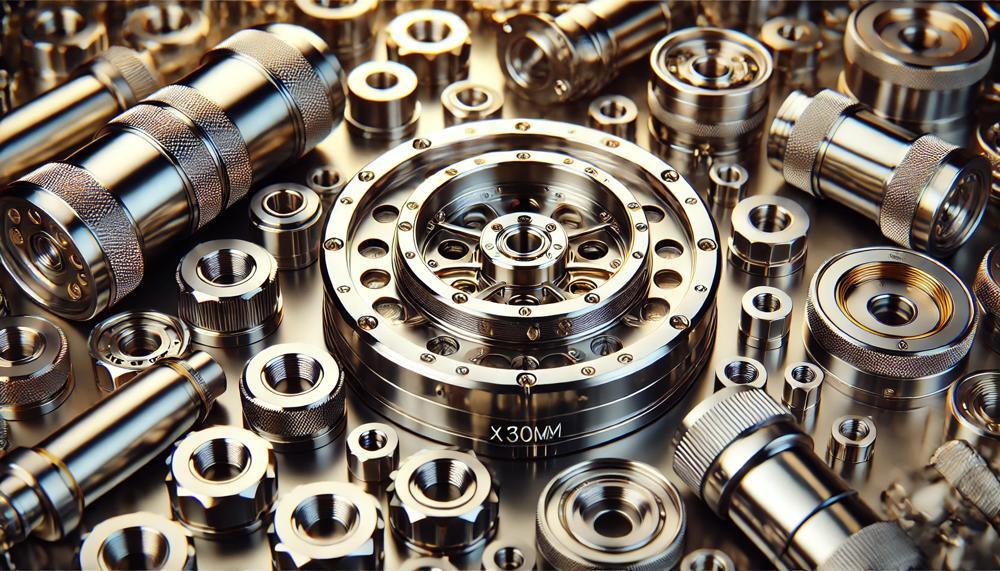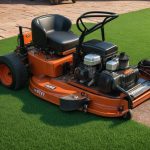In the fascinating world of materials science, the magnetic properties of stainless steel often spark curiosity and debate among both professionals and enthusiasts alike. Specifically, the enigma surrounding 304 stainless steel and its magnetic behavior stands as a compelling topic that blends the lines between chemistry, physics, and everyday applications. This intriguing alloy, known for its exceptional resistance to corrosion and widespread use in everything from kitchen appliances to industrial equipment, holds secrets about magnetism that we’re about to unravel.
In this article, we’re diving deep into the heart of the matter, exploring the magnetic personality of 304 stainless steel. Through a blend of casual conversation and professional insight, we’ll uncover the truth behind its magnetism, debunk common myths, and reveal how its properties affect its use in various applications. Whether you’re a seasoned metallurgist or simply curious about the materials that make up the world around you, this exploration will shine a light on:
- The Composition of 304 Stainless Steel: What makes it different from other stainless steels?
- Magnetism Explained: How does the structure of 304 stainless steel influence its magnetic properties?
- Real-World Implications: How does the magnetism of 304 stainless steel affect its application in industries and everyday products?
- Debunking Myths: Separating fact from fiction in the realm of stainless steel magnetism.
Prepare to be drawn into the world of 304 stainless steel, where we’ll magnetize your curiosity and attract a deeper understanding of this versatile material. Join us as we decode the mysteries of magnetism in 304 stainless steel, providing you with insights that are both enlightening and applicable to the world of materials science and beyond.
Contents
Magnetic Properties of 304 Stainless Steel

304 stainless steel, beloved for its balance of chromium (18%) and nickel (8%), sits firmly in the austenitic family, setting it apart with its primarily non-magnetic essence. This intrigue of science hinges on its austenitic microstructure, a lattice of atoms dancing in a face-centered cubic (fcc) pattern, inherently shunning magnetism. The soul of 304 whispers tales of a non-magnetic character, owing to this atomic choreography, contrasted vividly against ferritic or martensitic steels, where atoms align in a body-centered cubic (bcc) structure, welcoming magnetism with open arms.
Yet, the plot thickens with cold work – bending, cutting, shaping. This manipulation nudges 304 closer to magnetism, a secret unveiled only under the scrutiny of a powerful magnet, revealing a faint paramagnetic whisper. This transformation, a slight deviation from its non-magnetic roots, contrasts with 316 stainless steel. The latter, enriched with molybdenum, maintains its non-magnetic hymn more staunchly, even under the magnetic gaze, thanks to its robust austenitic integrity reinforced by this additional element.
Here’s a tableau illustrating the subtle magnetic variations between 304, 316, and other stainless steels:
| Stainless Steel Type | Main Alloying Elements | Magnetic Properties |
| 304 Stainless Steel | Chromium (18%), Nickel (8%) | Primarily non-magnetic, becomes slightly magnetic when cold worked |
| 316 Stainless Steel | Chromium, Nickel, Molybdenum (2%) | Non-magnetic, maintains non-magnetic properties better than 304 |
| Ferritic Stainless Steel | Chromium, low carbon | Magnetic due to bcc atomic structure |
In the world of welding, understanding these magnetic nuances is pivotal. Welders must anticipate the steel’s behavior, adapting techniques to ensure the integrity of the weld, especially in 304’s case, where its magnetic properties might subtly shift, influencing welding approaches and corrosion resistance.
Factors Affecting the Magnetism of 304 Stainless Steel
The magnetism of 304 stainless steel, a cornerstone material in myriad applications from skyscrapers to surgical instruments, owes its peculiar nature to a quartet of pivotal factors.
Each plays its unique part in weaving the final magnetic tapestry of this widely esteemed alloy.
Chemical Composition:
At the heart of 304 stainless steel’s magnetic persona lies its chemical makeup. Comprising roughly 18% chromium and 8% nickel, this alloy strikes a fine balance between magnetic and non-magnetic elements.
Chromium stands its ground as a non-magnetic heavyweight, while nickel throws its ferromagnetic punches lightly, ensuring the alloy mostly sidesteps the magnetic fray.
Microstructure Magic:
The atomic dance within 304, choreographed in a face-centered cubic (FCC) crystal structure, plays a crucial role.
This structural ballroom minimizes the formation of magnetic domains, keeping the alloy’s magnetic permeability on a tight leash and its magnetic nature under wraps.
Processing Pedigree:
The way 304 is processed can sway its magnetic mannerisms. Cold working, annealing, and welding are alchemists that transmute its structure and magnetic characteristics.
While cold working might coax out a magnetic murmur by straining the atomic lattice, annealing aims to soothe and realign it, veering back towards its quieter, non-magnetic state.
The Impurity Influence:
Lastly, the presence of impurities can sprinkle some magnetic spice into the 304 mix. Unwanted iron guests can gatecrash the non-magnetic party, lending the steel a magnetic tint. Vigilance in material quality and cleanliness is thus paramount in preserving the intended magnetic neutrality of 304 stainless steel.
Is 304 Stainless Steel Magnetic?
Generally, 304 stainless steel is considered non-magnetic. However, its magnetism can vary depending on its processing and composition. While 304’s basic structure should render it non-magnetic, processes such as cold working can introduce magnetic properties.
This is pivotal in welding, as magnetism in the steel can influence welding methods, causing issues like arc blow, where the electric arc is deflected by magnetic fields, complicating the process and affecting the quality of the weld.
Understanding the Magnetism in 304 Stainless Steel
- Influence of Cold Working: Cold working of 304 stainless steel, such as rolling, bending, or forming, alters the steel’s microstructure and can induce magnetism.
- Heat Treatment: Specific heat treatments can reduce induced magnetism but must be carefully managed to avoid compromising the steel’s corrosion resistance.
- Impurities and Alloy Composition: Variations in composition, especially the presence of impurities or the alloying elements, can affect the magnetic properties.
Importance in Welding
| Factor | Impact on Welding | Consideration |
| Induced Magnetism | Can cause arc blow, affecting weld quality | Pre-weld treatment may be required |
| Welding Technique | Needs adjustment depending on the material’s magnetism | Select appropriate welding methods |
| Post-Weld Properties | Magnetism can affect post-welding properties like corrosion resistance | Consider post-weld heat treatment |
Understanding the magnetism in 304 stainless steel is crucial for welders to adapt their techniques and ensure high-quality welds.
Practical Applications of 304 Stainless Steel
304 stainless steel, though primarily known for its excellent corrosion resistance and widespread use in various domains, presents a curious case when it comes to its magnetic properties. Initially non-magnetic, its structure can subtly shift during processes such as welding or cold working, imparting a mild magnetic quality.
This nuanced characteristic makes it a fitting choice for specific applications where both the magnetic properties and the inherent strengths of 304 stainless steel are beneficial. Let’s delve into the industries and products that capitalize on this trait.
| Industry | Product/Application | Reason for Use |
| Automotive | Fuel injectors, exhaust systems | Resistance to corrosion and mild magnetism enhance durability and performance. |
| Construction | Structural supports, fasteners | Mild magnetic properties ensure secure installation with magnetic tools. |
| Medical | Surgical instruments, implants | Hygiene and the ability to be slightly magnetic for precision tools use. |
| Appliance Manufacturing | Refrigerator doors, dishwasher racks | Corrosion resistance and the capacity to hold magnetic seals and latches. |
| Food Processing | Preparation surfaces, cutlery | Essential for cleanliness, with slight magnetism aiding in tool retention. |
In essence, 304 stainless steel’s adaptability, coupled with its conditional magnetic properties, earmarks it for applications where both resilience and a degree of magnetism are prized.
Advantages of Using 304 Stainless Steel
The advantages of using 304 stainless steel, when compared to other types of stainless steel, are its excellent balance of corrosion resistance, formability, and cost-effectiveness. Below is a detailed comparison table:
| Property | 304 Stainless Steel | Other Types of Stainless Steel |
|---|---|---|
| Corrosion Resistance | High (due to 18% chromium and 8% nickel) | Varies (may require higher nickel content for similar resistance) |
| Formability | Excellent | Varies (some grades may be harder to form) |
| Weldability | Excellent | Varies (some grades require special welding techniques) |
| Cost | Cost-effective | Often more expensive (especially with higher nickel content) |
| Magnetism | Non-magnetic | Varies (some grades are magnetic) |
| Strength and Toughness | Good balance | Varies (some grades may offer higher strength) |
| Heat Resistance | Resistant to moderate temperatures | Varies (some grades have higher heat resistance) |
In summary, 304 stainless steel is a preferred choice in industries requiring a balance between corrosion resistance, formability, weldability, and cost-effectiveness. It is especially suitable for food processing, construction, and transportation applications.
Disadvantages of Using 304 Stainless Steel
Cost Implications
- Higher Price Tag: 304 stainless steel, known for its robustness and rust resistance, often comes with a steeper price compared to other metals. This can impact budget considerations for projects.
Sensitivity to Temperatures
- Temperature Vulnerability: This steel variant can experience brittleness and warping when exposed to extreme temperatures, a common occurrence in welding. This factor affects its structural integrity and performance in temperature-intensive environments.
Density and Suitability
- Weighty Matters: The density of 304 stainless steel might render it less suitable for projects where lighter materials are advantageous. This can limit its application in certain designs.
Impact on Magnetic Properties
304 stainless steel is generally non-magnetic. However, its magnetic properties can be altered through welding:
| Process | Effect on Magnetic Properties | Considerations |
| Welding | Can induce slight magnetism | Magnetism is usually temporary, but it might interfere with applications that require non-magnetic properties. |
| Cold Working | Increases magnetism | Alteration in magnetic properties could affect the use in certain environments. |
| Heat Treatment | Can reduce induced magnetism | Additional processes required to restore non-magnetic properties, increasing time and cost. |
To sum up, while 304 stainless steel offers considerable advantages in terms of strength and corrosion resistance, its higher cost, sensitivity to extreme temperatures, and density should be thoroughly evaluated.
Conclusion
The magnetic properties of 304 stainless steel are a puzzle in the field of materials science. They combine chemistry, physics, and real-world uses to make an interesting story. The mix of chrome and nickel in this metal makes it stand out for its ability to fight rust. We use it all the time, from dishes to industrial machinery. But what really interests us is the way its atoms move and how its magnetic personality changes slightly in different situations.
Exploring the magnetic landscape of 304 stainless steel shows that it is mostly not magnetic at its core. With its austenitic lattice, it has this property. However, methods like cold working can tip the balance and add a hint of magnetism. Not only is this change interesting from an intellectual point of view, but it also has real-world effects on welding, where knowing how steel behaves magnetically is key to making sure the quality and integrity of welds.
Looking into the magnetic properties of 304 stainless steel also busts myths and teaches us about its real-world uses. The complex magnetism of this steel is very important, both in the building of skyscrapers and the accuracy of medical tools. It presents both obstacles and possibilities. It shows how useful the metal is because it combines resistance to rust with conditional magnetism, which makes it a top choice in many fields.
In conclusion, the magnetic story of 304 stainless steel is an interesting part of the larger story of materials science. It makes us think of how makeup, structure, and processes work together to make the metal useful in today’s world.





